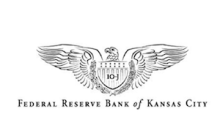
Fast, affordable Internet access for all.

In July, the Community Affairs Department of the Federal Reserve Bank of Kansas City released Disconnected: Seven Lessons on Fixing the Digital Divide, a report that touches on Internet access, adoption, and affordability. Overall, this is an insightful primer on the digital divide and how banks can help.
The CRA and the Digital Divide
Banks have a responsibility to invest in disadvantaged communities under the Community Reinvestment Act. The report broadly outlines the state of high-speed Internet access, including the differences between rural and urban access problems, and explains why the digital divide remains so persistent.
Part of the problem is that our data on Internet access and adoption is woefully lacking. The report includes a section on how FCC data overstates coverage and compares it to the ways Microsoft has attempted to verify actual home Internet connections:
“The FCC’s data measure availability of broadband while the Microsoft data measure broadband usage. The company shared its analysis with the FCC, which is looking at how it might improve its broadband measurements. While the FCC says 24.7 million Americans lack access to broadband, Microsoft found the actual number was 162.8 million.” (P. 26)
Another related problem that the report identifies is that the technology needed for high-speed Internet access seems to be constantly changing. Companies do not continue to invest consistently in rural or low- and middle- income communities, leaving both with last-generation networks. At the Institute for Local Self-Reliance, we've learned from years of research that fiber connectivity has the ability to meet current and future needs.
Closing the Digital Divide
Expanding high-speed Internet access can expand access to banking. The report notes that:
“Among low-income households, research by the Federal Reserve Bank of Kansas City shows that lacking Internet access has a higher correlation to being unbanked than a variety of other characteristics, including employment status and race.” (P. 11)
Supporting community networks is one way banks can improve high-speed Internet access, and our research appears throughout the report. One of the example explained how banks played a role in the success of Co-Mo Electric Co-op. This electric co-op was able to build a high-speed network in Missouri without federal funds.
“To be included [in the Co-Mo Electric Internet project], a subscriber needed to pay a $100 deposit. The enthusiasm for broadband was such that people went door to door to get sign ups, and some people paid the deposits of neighbors and friends. Two banks, Central Bank of Jefferson City and Bank of Concordia, volunteered to pay the deposits for each of their bank depositors.” (P. 33)
The authors describe how the digital divide further impacts employment and what community institutions are doing to provide people with needed technology resources. Middle-skill jobs are those that pay $15/hour (living wage) but do not require a bachelor’s degree.
“About 46 percent of overall labor demand is for middle-skill jobs, and some 82 percent of all middle-skill jobs are now “digitally intensive,” according to Burning Glass Technologies.” (P. 9)
The report goes on to explore how libraries and nonprofits provide the community technology programming that enables people to acquire digital skills. Supporting these community institutions is one way that banks can close the digital divide.
What’s Next
At the end of this 80-page report are three concluding recommendations:
“1. Research and evaluate the impact of policy on broadband expansion.”
“2. Support and expand workforce development programs focused on digital skills training.”
“3. Support computer donation programs targeting those in need.” (P. 67)
Read the whole report to learn more about recommendations from the Federal Reserve Bank of Kansas City.
Check out the promo video on the report from the KC Fed:
